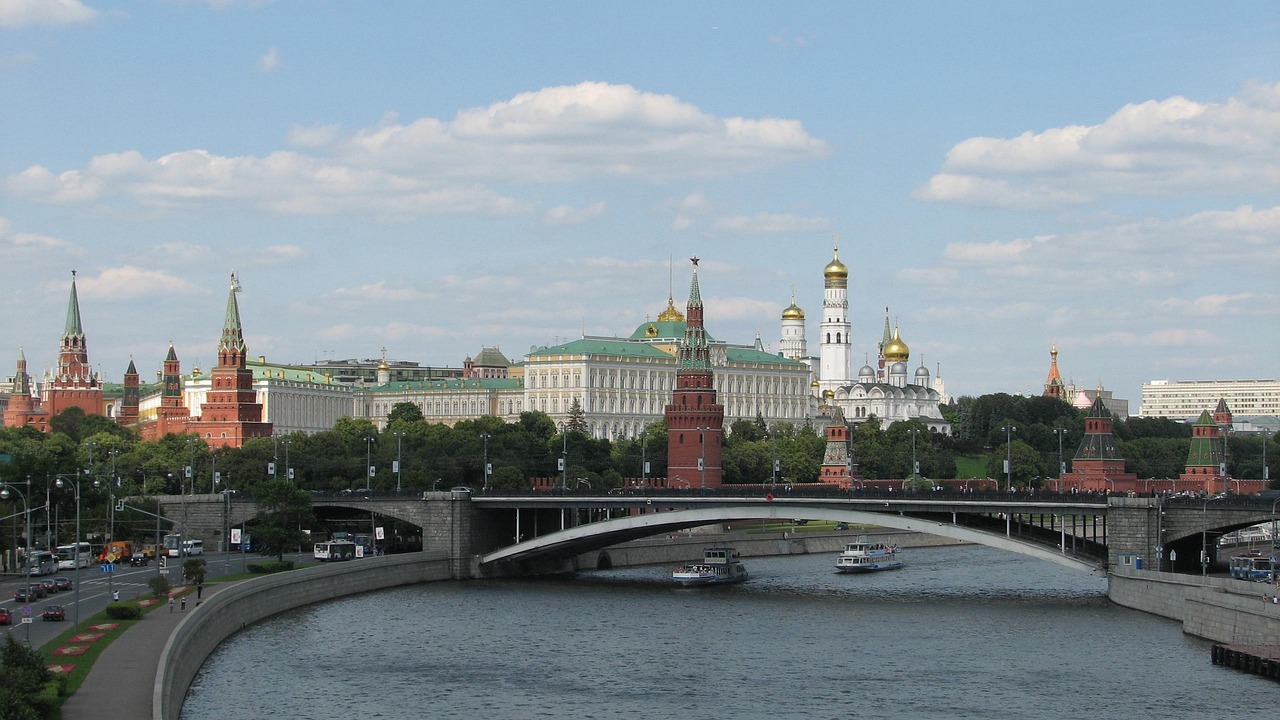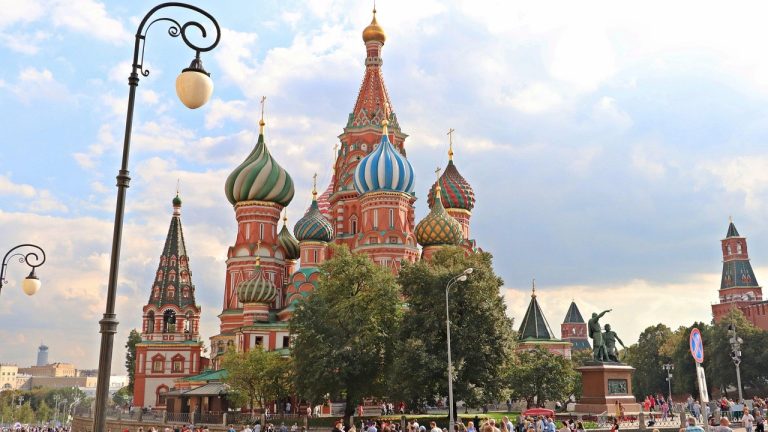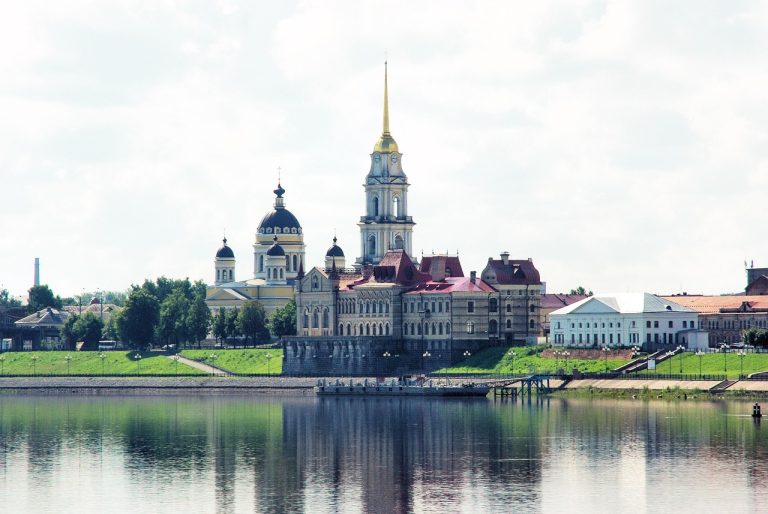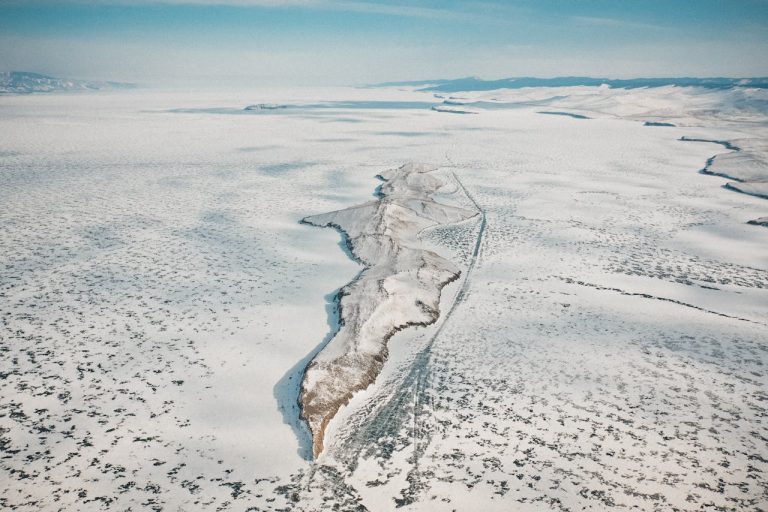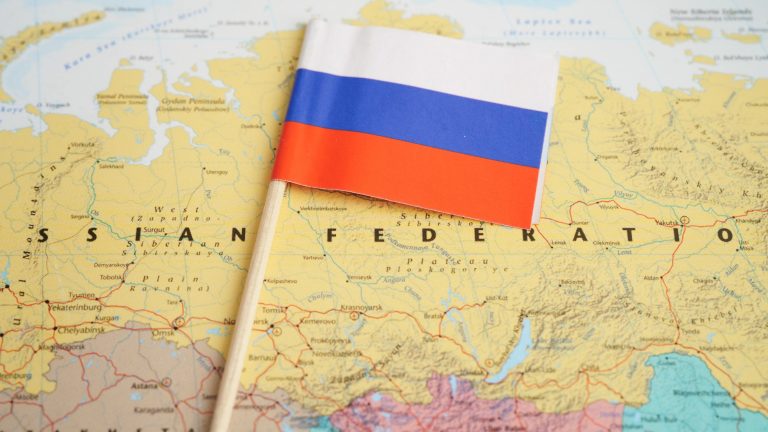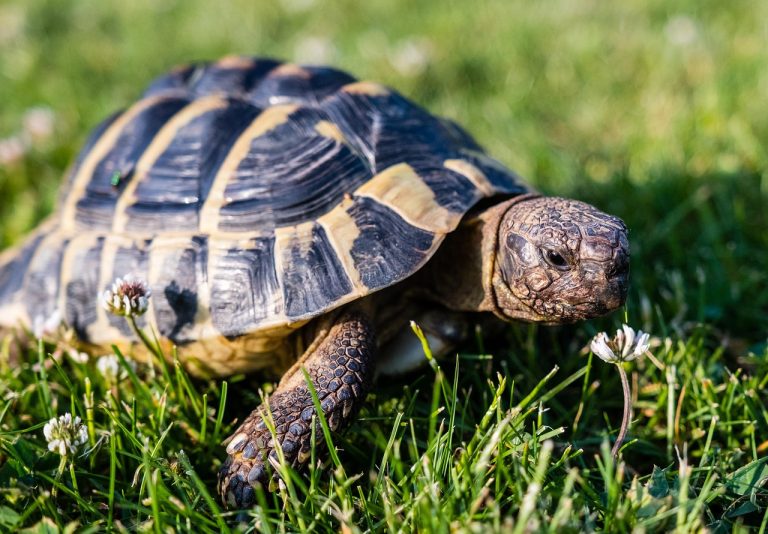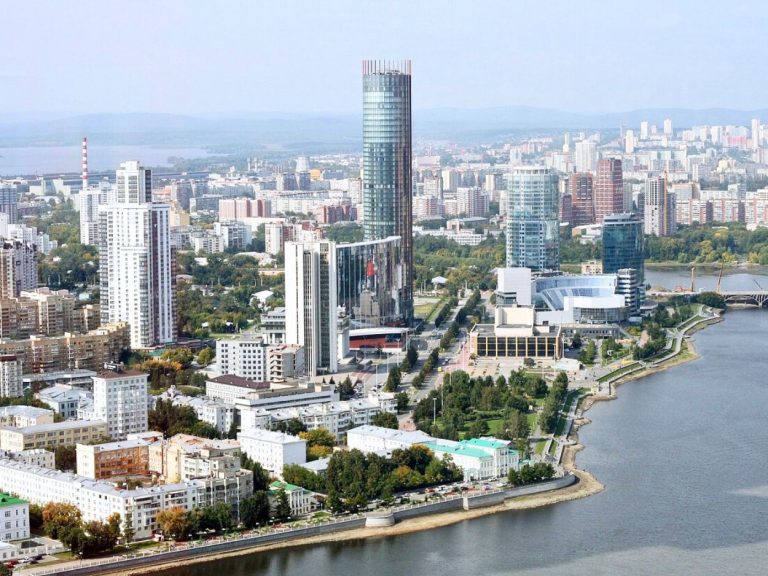Let’s quickly look at the biggest cities in Russia by city proper population. The 2021 Census shows Moscow at 13,010,112, and Saint Petersburg at 5,601,911. Novosibirsk, Yekaterinburg, Kazan, and Nizhny Novgorod follow closely. These cities are key to Russia’s growth and culture.
Moscow is a mix of old and new, with the Kremlin and modern skyscrapers. Saint Petersburg is famous for its beauty, with 42 islands and grand avenues. Novosibirsk is a hub for research and the arts.
Yekaterinburg is at the Ural Mountains, with a rich history. Kazan combines Tatar culture with stunning mosques. Nizhny Novgorod is known for its Volga River trade and Chkalov Stairs.
From 2010 to 2021, Moscow and Saint Petersburg grew significantly. Novosibirsk, Yekaterinburg, Kazan, and Nizhny Novgorod also saw increases. These numbers show the cities’ importance.
In 2021, 16 Russian cities had over 1,000,000 residents. Together, they housed about 35,509,177 people, or 24.1% of the country. These cities are the heart of Russia’s economy, culture, and transportation.
Travelers and students will find the largest Russian cities fascinating. They offer a glimpse into Russia’s history and culture. Let’s dive into the stories of these five cities.
Russia’s Largest Russian Cities and Urban Hierarchy
Russia’s cities are centered around two big cities and a circle of cities with over a million people. The biggest cities in Russia follow a hierarchy. Federal cities lead, and regional capitals keep things moving.
Moscow and Saint Petersburg are like two anchors. Moscow is a hub for politics and finance, while Saint Petersburg is known for culture and heritage. Cities in Siberia and the Urals add to the mix, shaping trade and research.
Defining Population Metrics: City Proper vs. Metropolitan Area
The 2021 Census counted people living in the city limits, not the whole area. Moscow and Saint Petersburg have specific numbers. But, people live beyond the city limits, in suburbs and towns.
This way, rankings stay the same for all big cities in Russia. It doesn’t count parts of Moscow and Saint Petersburg as separate cities. The list also includes Sevastopol and other areas that some countries see as part of Ukraine.
Why Moscow and Saint Petersburg Dominate Major Urban Centers in Russia
Moscow is Europe’s biggest city and Russia’s center of power. It’s where finance, policy, and media meet. Saint Petersburg is known for its heritage and design, with a port on the Gulf of Finland.
Both cities have grown a lot, with Moscow up 13.10% and Saint Petersburg up 14.80% from 2010 to 2021. This growth makes them even more important, creating jobs and driving travel and housing.
Population Context From the 2021 Census and 2024 Updates
The top 5 cities are part of a bigger picture of city life in Russia. In 2021, Russia’s cities with over a million people had about 35.5 million people. This shows how big cities shape markets, transit, and universities.
Russia updates its population numbers regularly. The latest update was in December 2024. The rankings are based on the 2021 numbers. Big cities in Russia are always changing as people move and new places are built.
| City | Status | 2021 City Proper | 2010–2021 Change | Role In Urban Hierarchy |
|---|---|---|---|---|
| Moscow | Federal city | 13,010,112 | +13.10% | Political-financial core; hub for the biggest metropolitan hubs Russia |
| Saint Petersburg | Federal city | 5,601,911 | +14.80% | Cultural and logistics center; anchor among major urban centers in Russia |
| Novosibirsk | Regional capital | 1,632,000 (approx.) | Solid growth | Siberian node tying metropolitan cities Russia along the Trans-Siberian |
| Yekaterinburg | Regional capital | ~1,540,000 | Moderate growth | Ural gateway linking Europe–Asia within the top populous cities Russia |
| Kazan | Republic capital | ~1,310,000 | Steady growth | Education and tourism driver in metropolitan cities Russia |
These numbers show how big cities in Russia are connected. From federal cities at the top to regional capitals, they form a ladder across the country.
Moscow: Europe’s Largest City and Russia’s Primary Metropolitan Hub
Moscow is the biggest city in Russia, changing the country and Europe. It has old walls and new glass towers. The city’s fast pace sets the tone for Russia.
Population Scale and Growth: From 11.5M (2010) to 13.0M (2021)
The city grew from 11,503,501 people in 2010 to 13,010,112 in 2021. This shows it’s Europe’s largest city and a major draw in Russia. After 2021, more people kept coming, attracted by jobs, services, and schools.
| Metric | 2010 | 2021 | Change (2010–2021) | Context in Top Russian Urban Areas |
|---|---|---|---|---|
| City Proper Population | 11,503,501 | 13,010,112 | +1,506,611 (+13.10%) | Largest among the biggest cities in Russia; core driver of national migration |
| Density and Housing Expansion | New Moscow projects begin | Expanded districts integrated | Rapid suburban infill | Model for growth across the biggest metropolitan hubs Russia |
| Labor Market Pull | High formal employment | Higher wages vs. regions | Wider gap | Sets benchmarks for Russia’s most populated cities |
Economic and Cultural Significance: Kremlin, Bolshoi, “Moscow City” Skyline
The Kremlin is the world’s largest medieval fortress. It’s at the heart of Red Square, St. Basil’s Cathedral, and Lenin’s Mausoleum. The Bolshoi Ballet is a global stage, and the “Moscow City” district has seven of Europe’s tallest towers.
Narrow lanes meet the grand “Seven Sisters,” and wide boulevards lead to glass-and-steel canyons. Markets buzz by day; luxury corridors glow by night. This mix makes the capital a leader among Russia’s cities.
Role in National Transport, Finance, and Tech Innovation
Radial rail lines, Sheremetyevo and Domodedovo airports, and highways make the capital a hub for people and goods. Banks, exchanges, and corporate headquarters are near “Moscow City.” They shape capital flows that are key for Russia.
Tech parks and a wide talent pool support startups and major firms in software, fintech, and e-commerce. This ecosystem boosts education and R&D. It makes Moscow a leader in Russia and sets trends for other cities.
Saint Petersburg: Cultural Capital and a Leading Top Russian Urban Area
Saint Petersburg is a city of water, light, and stone. It was founded by Peter the Great in 1703. The city is known for its canals and rivers, making it a top Russian urban area.
Population and Status: About 5.6M Residents on 42 Islands
The 2021 Census showed 5,601,911 residents, a 14.80% increase. The city spans 42 islands, connected by over 800 bridges. This makes it one of the largest Russian cities.
Recent updates show the city is growing and stable. It attracts students, professionals, and creatives. Its historic core and transit system make daily life grand and practical.
Protected Skyline, Imperial Heritage, and Museum Density
The city’s skyline is protected, with most buildings below the Winter Palace height. Church domes and spires stand out against the sky. The Mariinsky Theatre and the Hermitage are just a few of the many museums.
Three centuries as an imperial seat and the Russian Revolution left a rich history. Few cities offer such intact streetscapes, blending living city and museum.
Tourism, Logistics to the Northwest, and Creative Industries
Tourism thrives in UNESCO-listed districts and along the Neva. The White Nights extend evenings into dawn. The city is a key gateway to the Baltics and Northern Europe.
Creative industries flourish in old factories and courtyards. Design studios, indie theaters, and music venues set the pace. This mix of heritage and new work makes Saint Petersburg stand out.
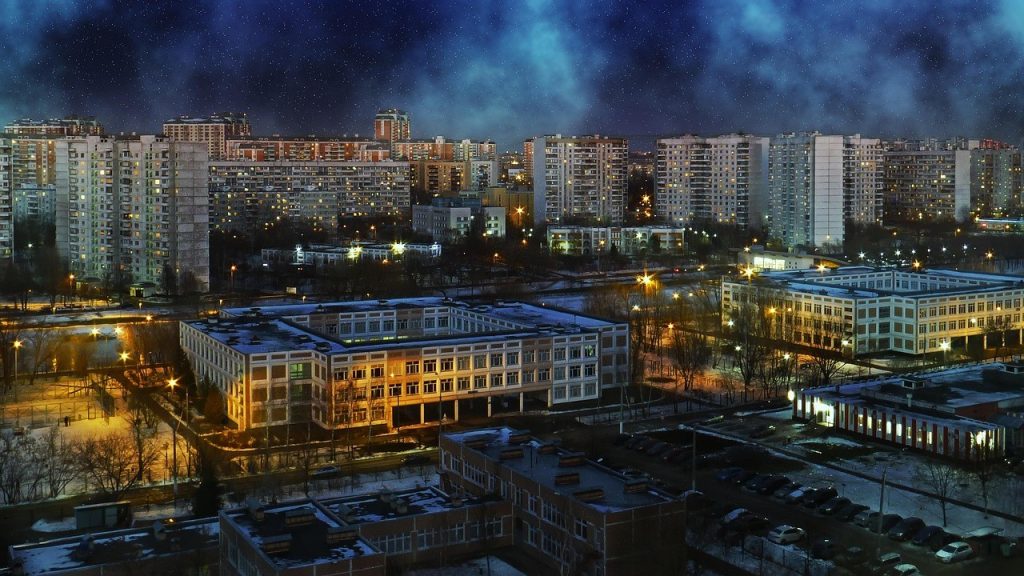
Novosibirsk: Siberia’s Biggest Metropolitan Hub and Tech Powerhouse
This city sits on the Ob River, blending old-world charm with modern energy. It grew with the Trans-Siberian Railway and has kept its pace. Its architecture shows a mix of old and new, standing out in Russia.
Population Leader in Siberia: 1.63M City Proper
The city proper has 1,633,595 people, up from 1,473,754 in 2021. This growth makes it a key city in Russia. It’s a major hub for services, culture, and trade.
Akademgorodok, Higher Education, and R&D Clusters
Akademgorodok, in the city’s south, is a hub for research and education. It’s known as “Russia’s Silicon Valley” for its tech advancements. The Novosibirsk Theatre of Opera and Ballet adds to the city’s cultural richness.
Transport Crossroads on the Trans-Siberian
The city is a key stop on the Trans-Siberian Railway. It has busy freight yards, a metro, and a strong logistics network. Air and river routes also connect it, making it a vital hub in Russia.
- Core Strengths: Rail gateway, metro network, and high-capacity logistics.
- Knowledge Engine: Universities, labs, and venture-backed startups.
- Cultural Magnet: Opera and ballet complex, galleries, and lively public squares.
Yekaterinburg: Ural Gateway Among Top Populous Cities Russia
This city sits on the line between Europe and Asia, a key spot for trade, culture, and travel. It has a mix of heavy industry and a growing creative scene. This makes it stand out among Russia’s most populated cities.
Population and Regional Role: ~1.54M in the Urals
In 2021, the city had 1,544,376 people, a 14.4% increase from before. This steady growth keeps it among the top cities in Russia. It’s the fourth-largest city, providing jobs, universities, and medical care to the Urals.
Recent data in 2024 shows growth is steady, close to 2021 levels. Its role in rail and air travel means growth spreads beyond the city to wider areas.
Cultural Scene, Creative Complexes, and Historic Legacy
Old factories now house murals, studios, and indie venues. This shows how old workshops have become creative spaces. Street art and industrial steel blend, creating a unique urban vibe.
The city’s history is deep. The Church on the Blood marks the site where Tsar Nicholas II and his family were executed. Museums, theaters, and festivals mix old history with a modern spirit, enriching Russia’s cities.
Industry, Logistics, and Europe–Asia Linkages
The city is known for heavy engineering, metals, and services. It also has a strong warehousing and freight sector. Rail and highways make it a key logistics hub.
Koltsovo Airport and the Trans-Siberian rail keep factories running and startups growing. Its mix of manufacturing and creativity keeps it among Russia’s top cities.
| Indicator | Detail | Why It Matters |
|---|---|---|
| Population (2021) | 1,544,376 (+14.42% from prior count) | Shows it’s among Russia’s most populated cities with growing appeal. |
| Geo Position | Ural foothills, Europe–Asia divide | Acts as a natural bridge for trade, culture, and travel. |
| Economic Base | Metals, engineering, services, logistics | Offers diverse sectors for stability across market changes. |
| Culture & Heritage | Church on the Blood, repurposed factory arts hubs | Combines solemn history with a lively creative scene. |
| Transport Links | Trans-Siberian rail, Koltsovo Airport, federal highways | Strengthens its status among the biggest metropolitan hubs Russia. |
Nizhny Novgorod vs. Kazan: Rounding Out Russia’s Most Populated Cities
Two Volga giants, Nizhny Novgorod and Kazan, join the list of Russia’s biggest cities. They are key to the Volga River’s role in Russia’s urban landscape. These cities are hubs for trade, education, and travel.
Nizhny Novgorod: Volga Trade Heritage and 1.23M Population
Nizhny Novgorod had 1,228,199 people in 2021, a small drop from 2010. It was founded in 1221 at the Volga and Oka rivers. It was once the Russian Empire’s biggest fair for a century.
The city’s Soviet-era industry, linked to the first Soviet tank, is notable. It has riverfront walks, the Chkalov Stairs, and a Kremlin. These attractions draw many visitors to this Volga city.
Kazan: Multicultural Capital of Tatarstan With ~1.31M Residents
Kazan had 1,308,660 people in 2021, up 14 percent from 2010. Founded in the 13th century, it mixes Tatar and Russian cultures. This makes it unique among Russia’s cities.
Catherine the Great allowed mosques to be built here. Kazan State University promoted Oriental Studies. Today, it has a UNESCO-listed Kremlin and the Qolşärif Mosque. Its growth keeps it a top urban area in Russia.
Comparative Strengths: Industry, Education, Tourism
Nizhny Novgorod focuses on manufacturing, river trade, and heritage tourism. Kazan emphasizes diversified industry, universities, and multicultural tourism. Both cities attract investment and talent, making them major urban centers in Russia.
Together, they strengthen the Volga region among Russia’s largest cities. Their 2021 numbers are updated to 2024, keeping the data current.
Biggest Cities in Russia: Related Major Urban Centers Beyond the Top Five
The story of Russia’s biggest cities goes beyond the usual names. Across the map, major cities connect trade routes, research, and culture. They use rail, rivers, and airports to link east and west.
Recent figures from the 2021 Census show changes in city populations. People move for jobs, schools, and housing. The biggest cities in Russia have unique roles but share a common rhythm of growth and learning.
Chelyabinsk, Omsk, Samara, and Rostov-on-Don in the National Urban Network
Chelyabinsk, with 1,189,525 residents, sits on the Europe–Asia border. It’s known for its steel plants and Gagarin Central Park. The 2013 meteor that hit the city added a modern chapter to its history.
Omsk has 1,125,695 residents and is known for its neoclassical streets and oldest museum in Siberia. It’s a hub for the space sector and has a connection to Fyodor Dostoevsky. The Irtysh and Om rivers set a calm pace.
Samara, with 1,173,299 residents, is famous for its Art Nouveau mansions and WWII history. It’s a lively city during the summer, with its beachy embankments hosting festivals.
Rostov-on-Don, with 1,142,162 residents, is known as the capital of southern Russia. It’s a key port and has a strong cultural scene, thanks to its universities and theaters.
How Secondary Metropolitan Cities Support Regional Growth
These cities serve as launchpads for growth. They have freight yards, river ports, and ring roads for trade. Universities train workers for local industries, connecting cities to regional labor pools.
Industrial clusters in these cities focus on specific areas, like metals in Chelyabinsk and aerospace in Omsk. Samara and Rostov-on-Don are growing in energy and IT services. These cities hold talent and fuel national supply chains.
Trends in Migration, Infrastructure, and Diversification
Population shifts follow projects and job opportunities. Transport upgrades help keep population steady. The 2021 Census and 2024 updates show movement but also resilience.
Other cities like Ufa, Krasnoyarsk, and Voronezh also play important roles. They help spread the load and offer new opportunities for jobs, culture, and study across Russia.
Conclusion
The map of Russia’s largest cities tells a story of size and speed. Moscow is the biggest, with about 13.0 million people as of 2021. Saint Petersburg comes next, with 5.6 million, known for its islands and museums.
Novosibirsk in Siberia has 1.63 million, and Yekaterinburg marks the Europe–Asia divide with 1.54 million. Kazan and Nizhny Novgorod, both on the Volga, complete the list of top cities by population.
But there’s more to Russia’s cities than just the big names. Cities like Chelyabinsk, Omsk, Samara, and Rostov-on-Don are key to the country’s economy. They support supply chains, rail networks, and education.
These 16 cities with over a million people make up about 35.5 million residents. That’s a quarter of Russia’s population. They show how power is spread across the country, even though they are far apart.
As of January 1, 2024, the numbers have changed a bit. But the biggest cities are always at the forefront. They drive culture, industry, and research in Russia.
From the Kremlin to the Bolshoi, and from Akademgorodok to the Trans-Siberian Railway, these cities lead the way. They are the heart of Russia’s growth and progress.
FAQ
What are the top five biggest cities in Russia by city proper population?
The 2021 Census shows Moscow as the largest with 13,010,112 people. Saint Petersburg follows with 5,601,911. Novosibirsk, Yekaterinburg, Kazan, and Nizhny Novgorod follow up.
How does “city proper” differ from a metropolitan area in Russia’s population counts?
City proper counts people within the city’s official limits. Metropolitan areas include suburbs and satellite towns. For example, Moscow and Saint Petersburg have smaller city proper populations but larger metropolitan areas.
Why do Moscow and Saint Petersburg dominate Russia’s urban hierarchy?
Moscow and Saint Petersburg are federal cities and key national centers. Moscow is Europe’s largest city, known for finance, tech, and culture. Saint Petersburg is famous for its skyline, museums, and logistics to the Baltics.
Which city leads Siberia, and what makes it a major urban center?
Novosibirsk is the largest city in Siberia with 1,633,595 people. It’s home to Akademgorodok, Russia’s Silicon Valley, and a major theater. It’s also a key stop on the Trans-Siberian Railway.
How do Kazan and Nizhny Novgorod compare among Russia’s most populated cities?
Kazan has 1,308,660 residents and is known for its Tatar heritage and universities. Nizhny Novgorod has 1,228,199 people and is a hub for Volga trade and industry. Both cities are important in the Volga macro-region.
